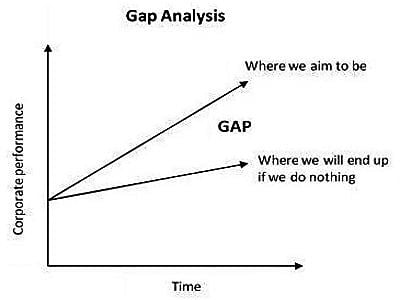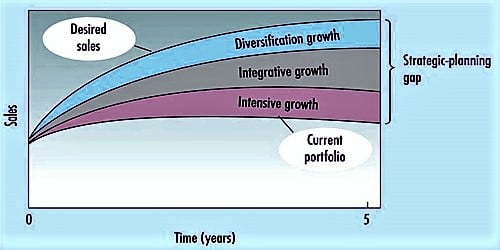A strategy gap refers to the gap between the current performance of an organization and its desired performance as expressed in its mission, objectives, goals and the strategy for achieving them. Strategic planning gap is the dissimilarity between preferred goals and the real goals of a company. McKeon argues that a strategic gap may be transformed into a strategic stretch. Effective strategic planning though it seems time overwhelming is necessary for every business to witness long-term success.
Often unseen, the Strategic Planning Gap is a threat to the future performance – and even survival – of an organization and is guaranteed to impact upon the efficiency and effectiveness of senior executives and their management teams. The strategy gap is considered to be real and exists within most organizations. An article in the “Fortune magazine” (June 1999 edition) stated that some 70% of CEOs’ failures were the result of poor execution rather than poor strategies.
Strategic Planning Gap Analysis helps recognize the performance gap with admiration to the approach the company follows to achieve its goals, whether the performance is associated with the mission and vision of the company. If a company does not know of its agreement in relation to their goals that the company is not likely to achieve the desired outcomes. So, proper strategic gap investigation would necessitate overcoming situations like this. The results of this investigation assist categorize the errors in reserve allotment and what steps need to be taken further to help get better performance through better consumption of the input resources.

There are various schools of thought on what causes the gap between vision and execution, and how the strategy gap might be avoided. In 2005, Paul R. Niven, a thought leader in Performance Management Systems, pinpointed four sources for the gap between strategy and execution, namely: lack of vision; people; management; and, resources. He argued that few understand the organization’s strategy and as most employees’ pay is linked to short-term financial results, maximizing short-term gains becomes the foremost priority which leads to less rational decision making. Management is spending little attention to the linkage between strategy and financial planning. Unless the strategic initiatives are properly funded and resourced, their failure is virtually assured.
Strategic gap analysis allows a company or organization to settle on whether it is getting the best return out of its resources and abilities. It identifies the gap between the application of resources and the best probable result from that application of those resources.
A strategic plan in common focuses on mid to long-term goals and explains the essential strategies for achieving them. Achieve further growth within current businesses – intensive:
- Market-penetration strategy – gain more market share in current prod, current market
- Market-development – develop a new market for the current product
- Product-development – develop new prod of potential interest to current market
- Diversification strategy – develop new prod for a new market.
Many businesses and other organizations are unsuccessful to plan deliberately. That means they have the capabilities and competencies to accomplish their fundamental business targets but not succeed to appreciate their full perspective. A strategic gap analysis would help such a business or institution bridge the gap between their present and probable positions.
















